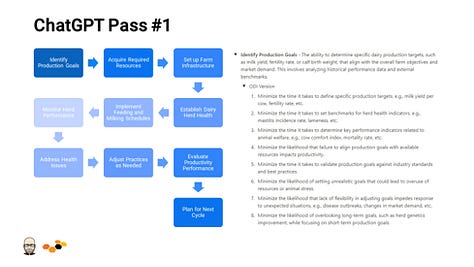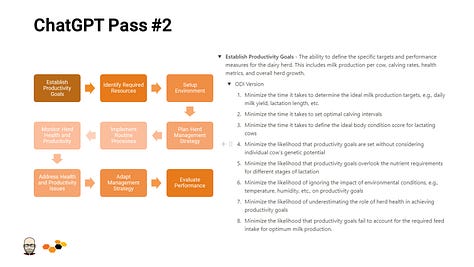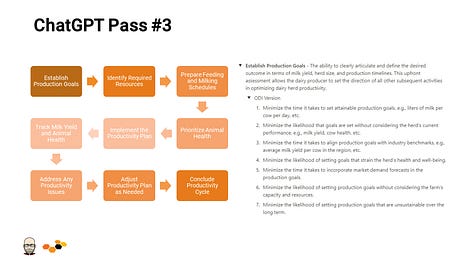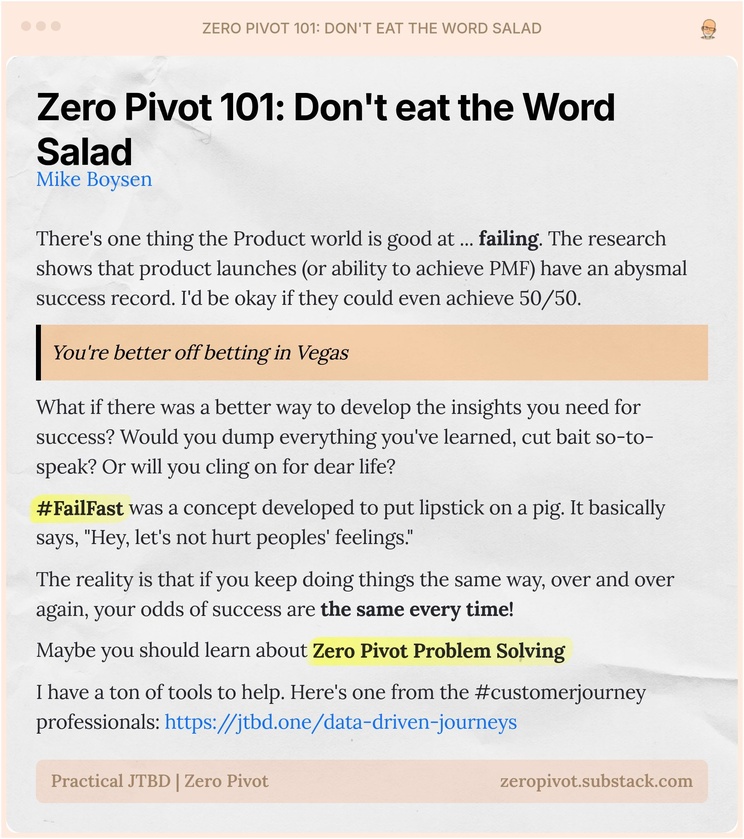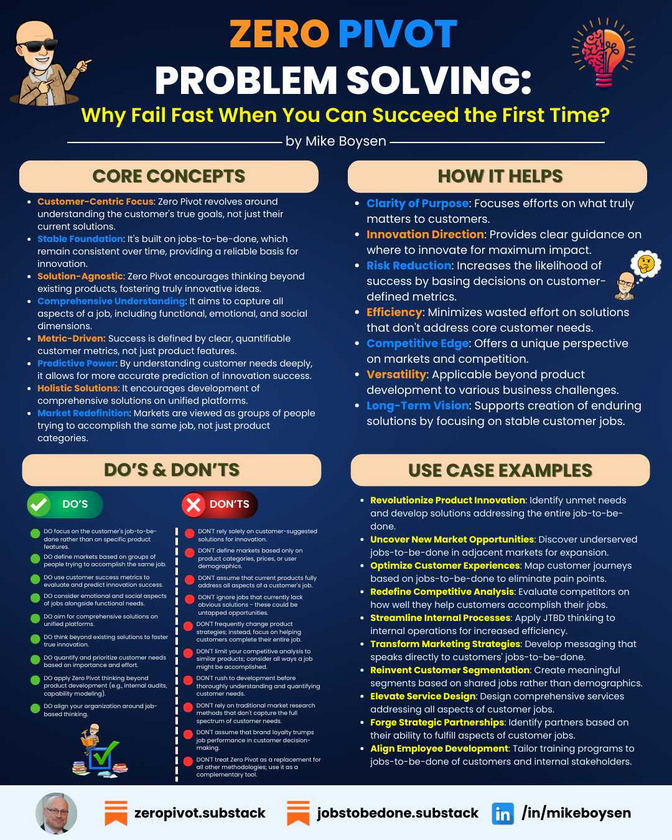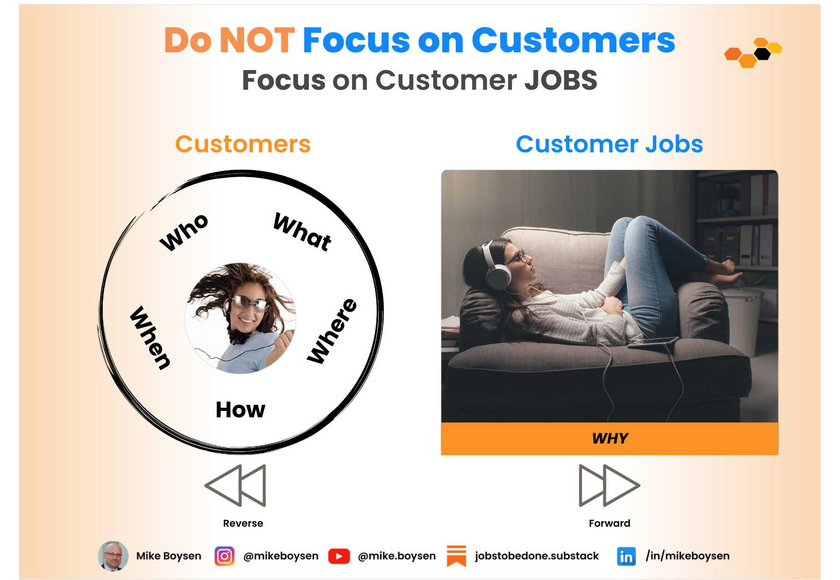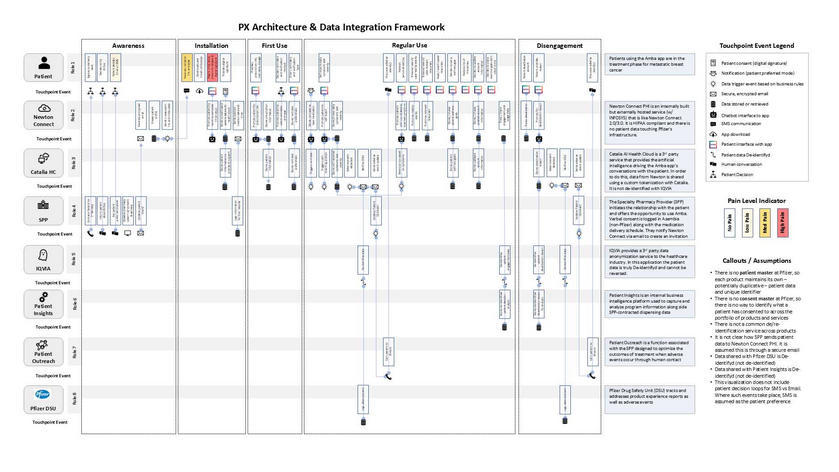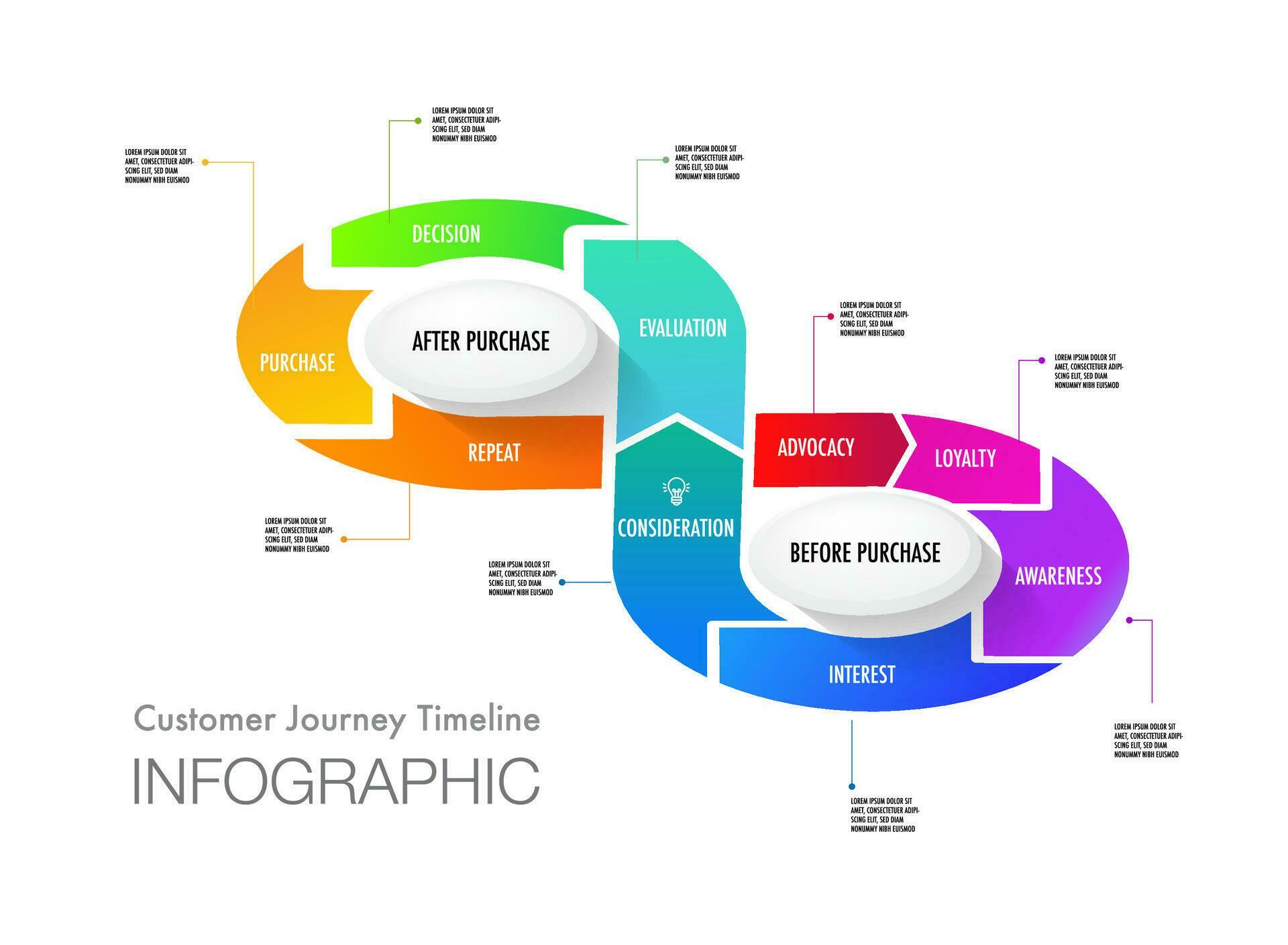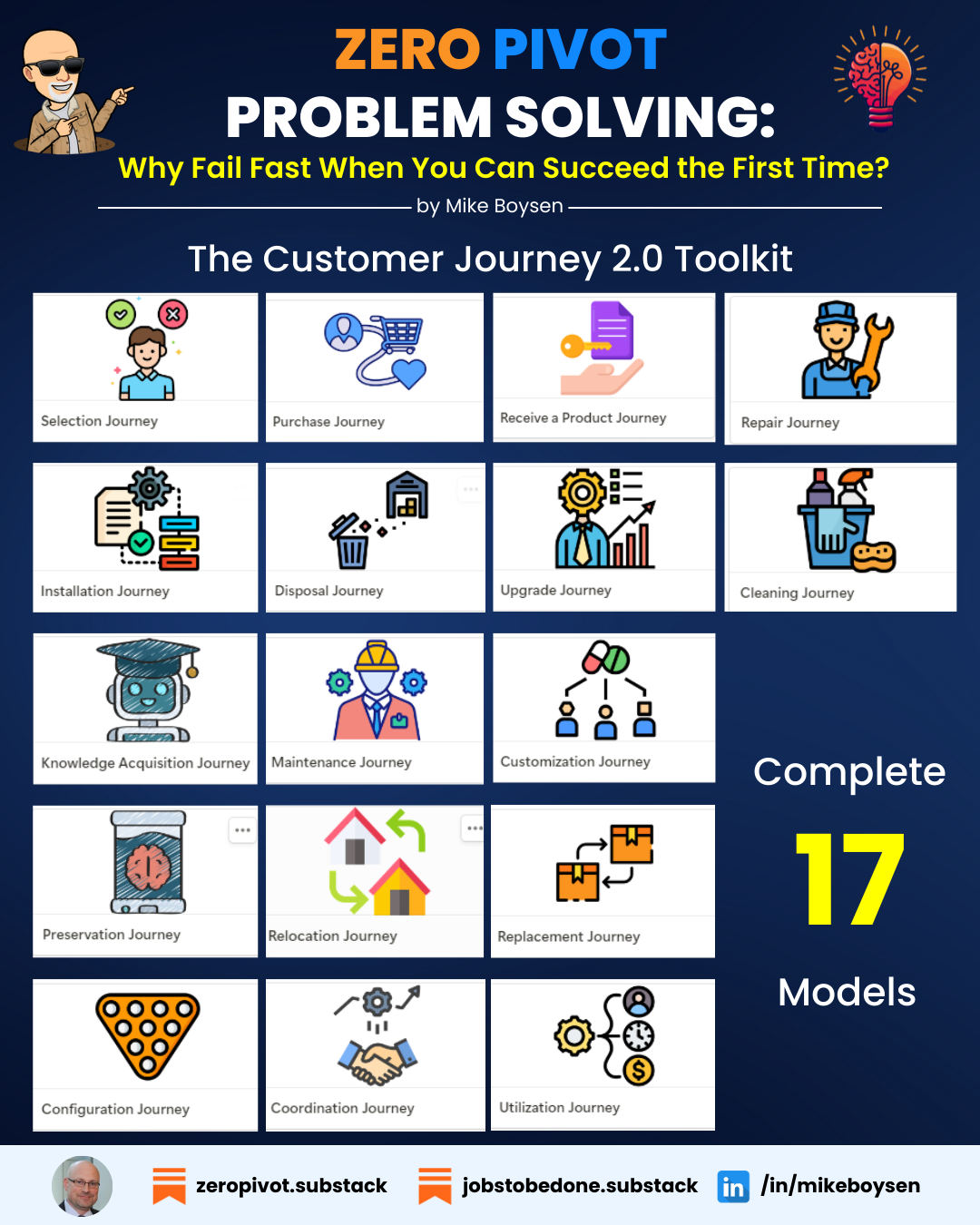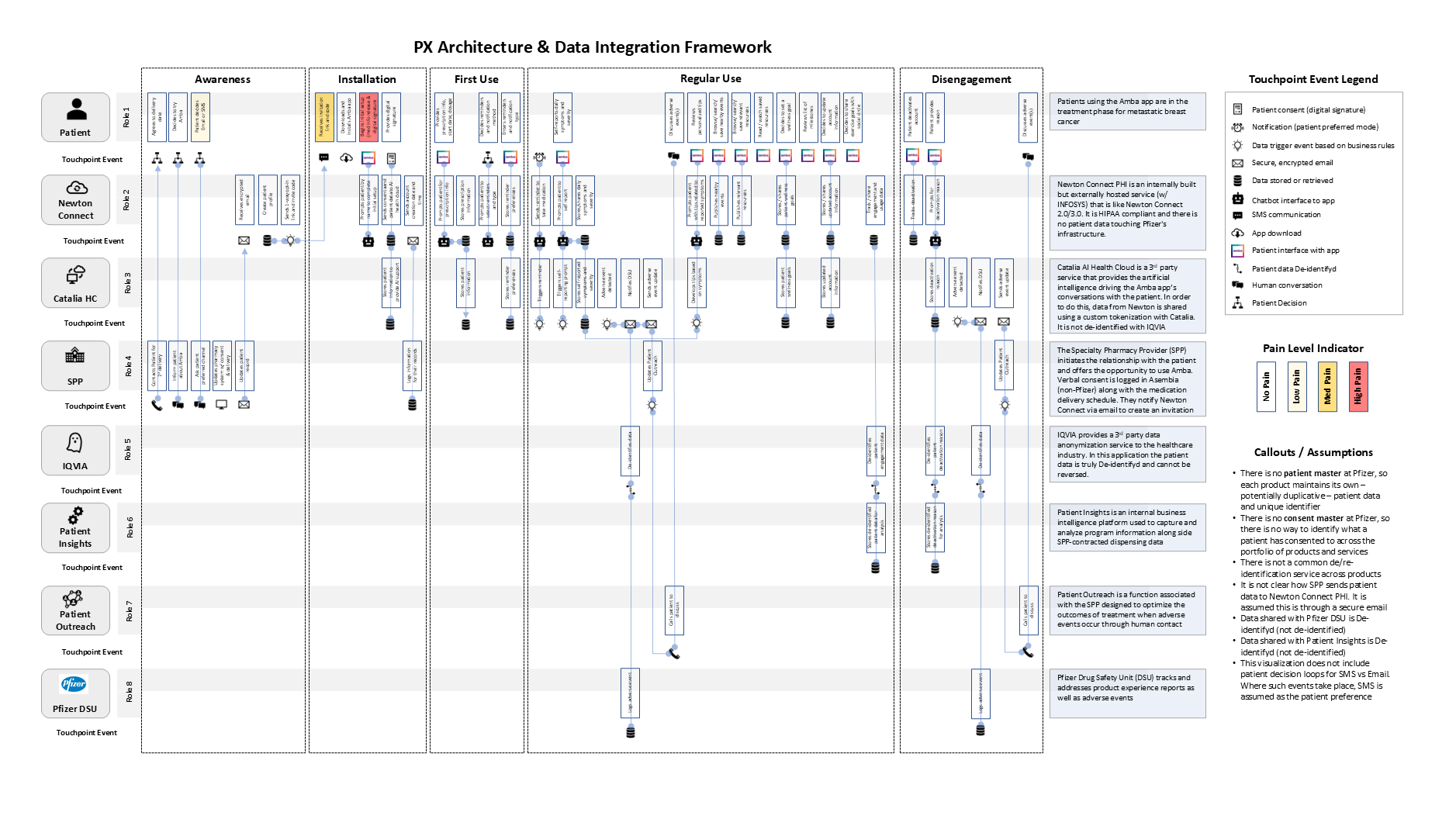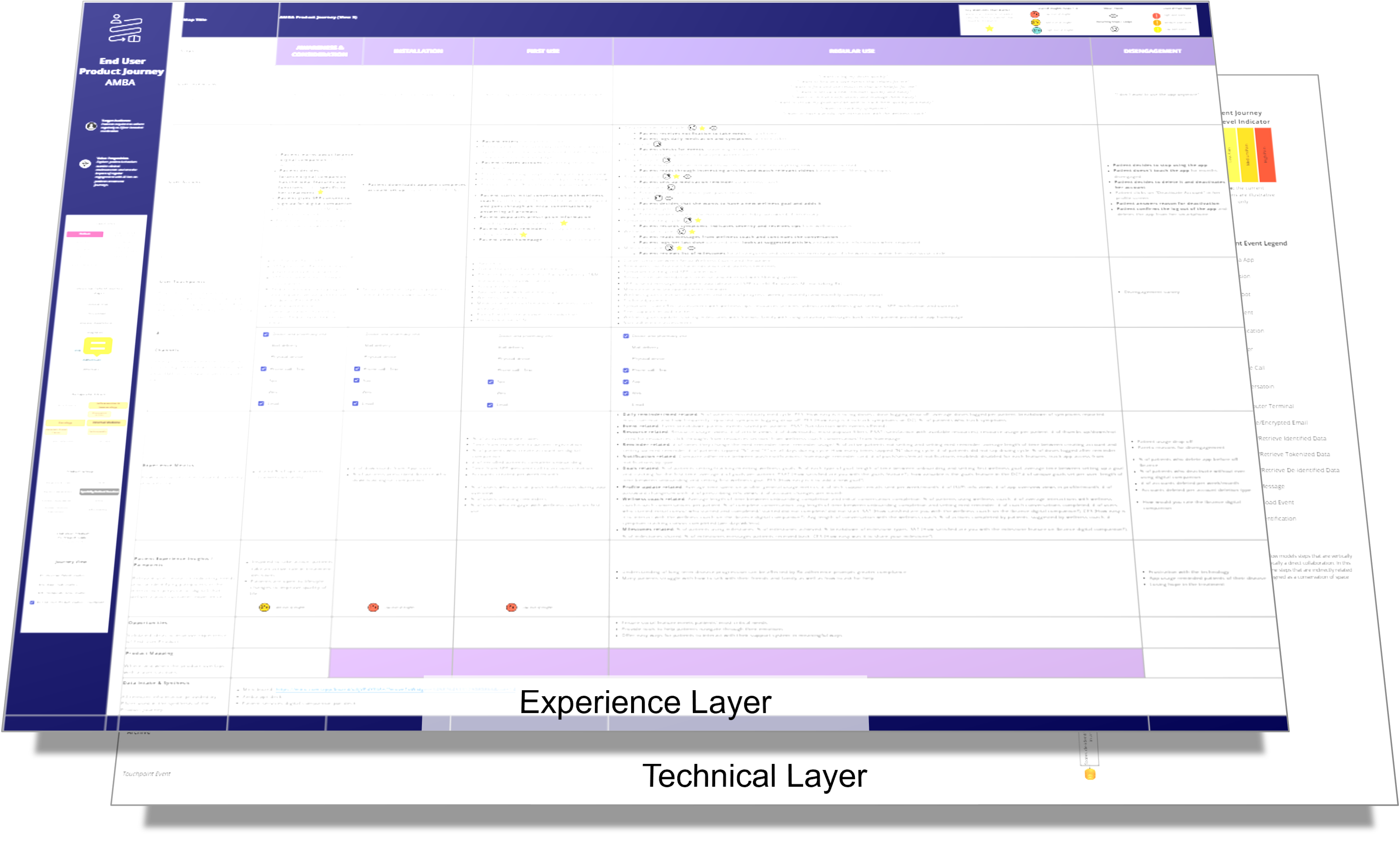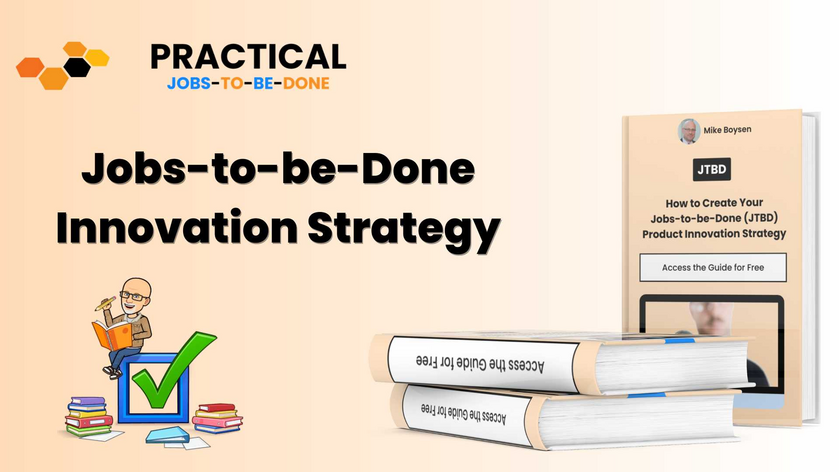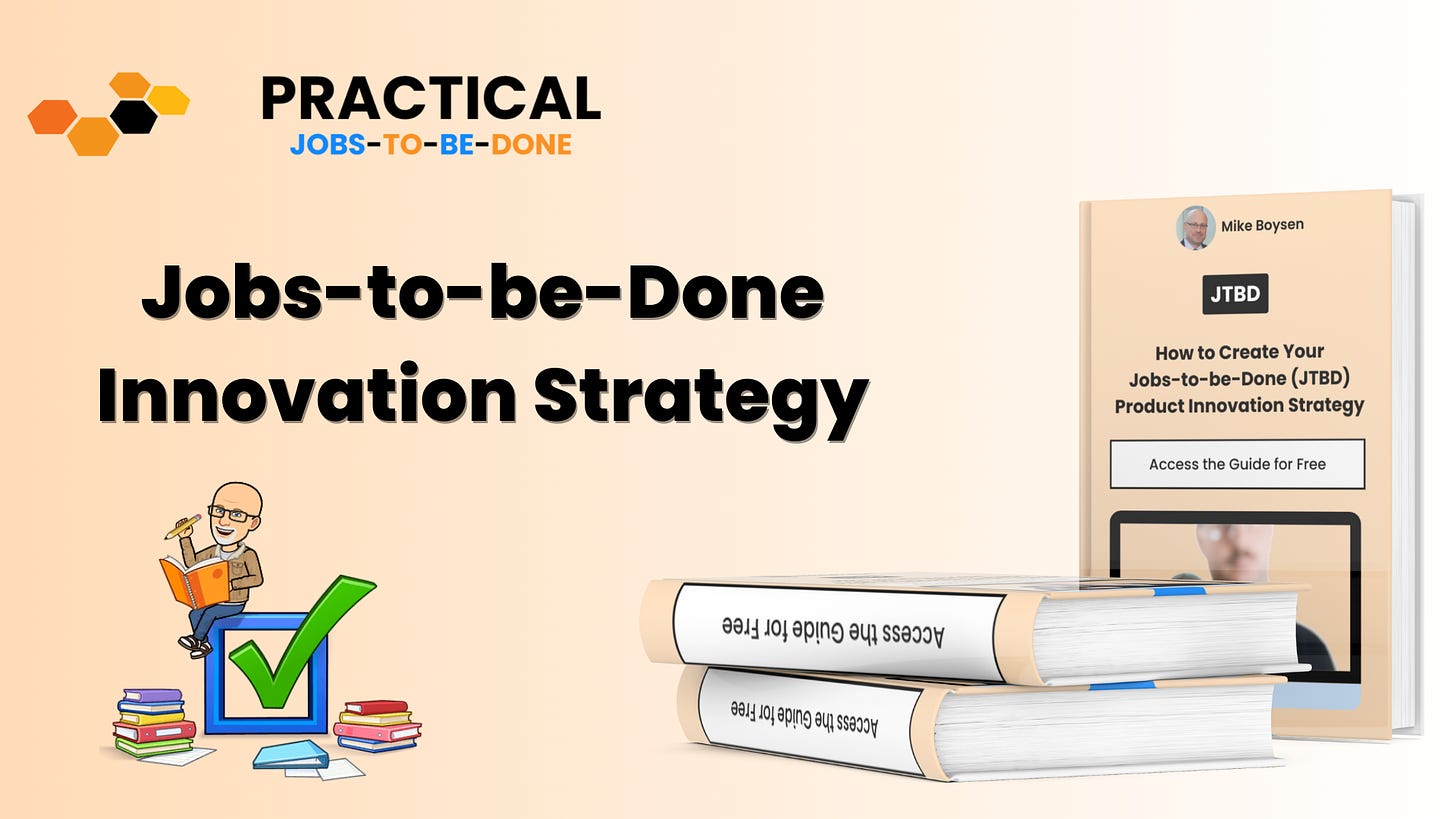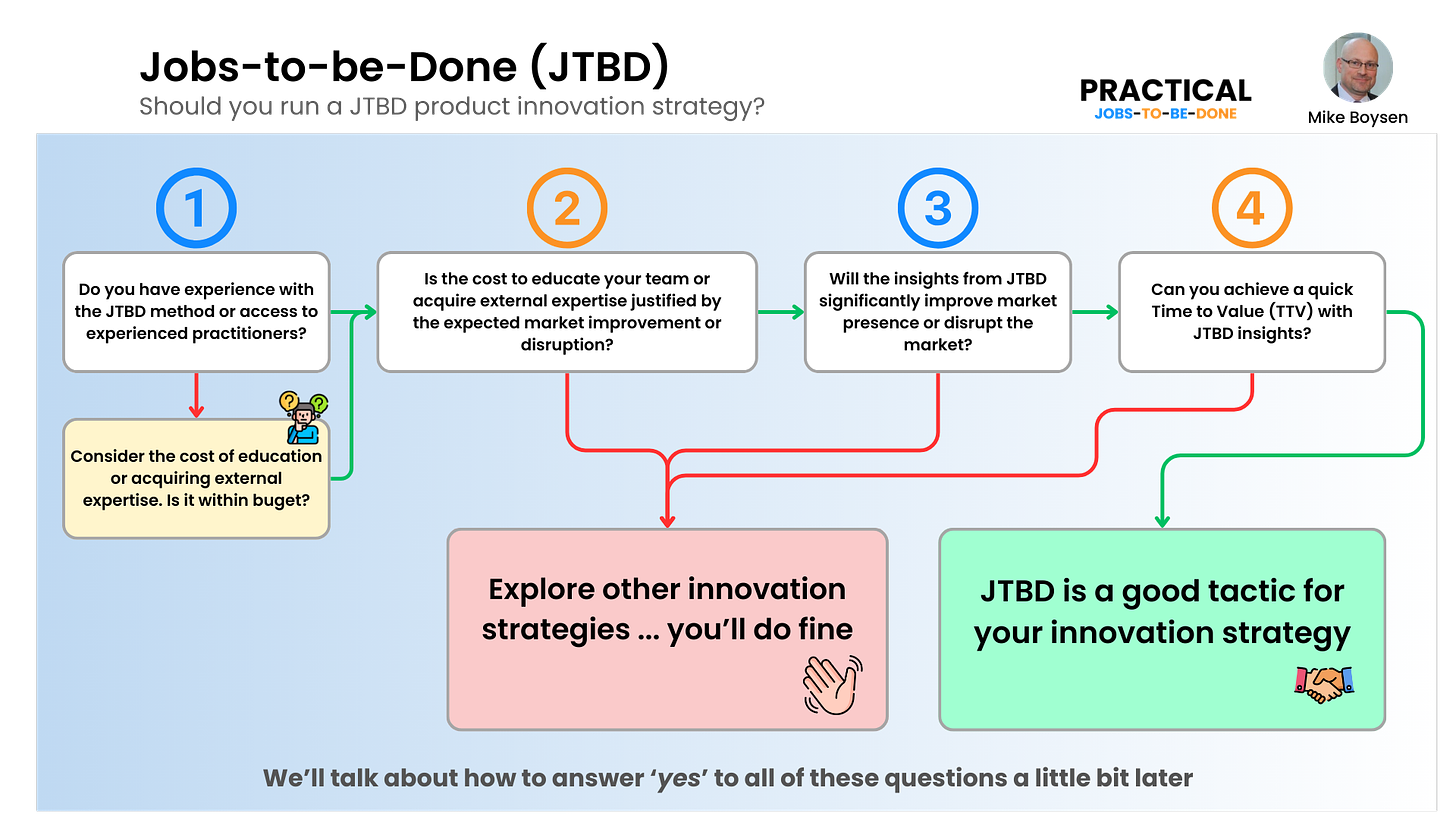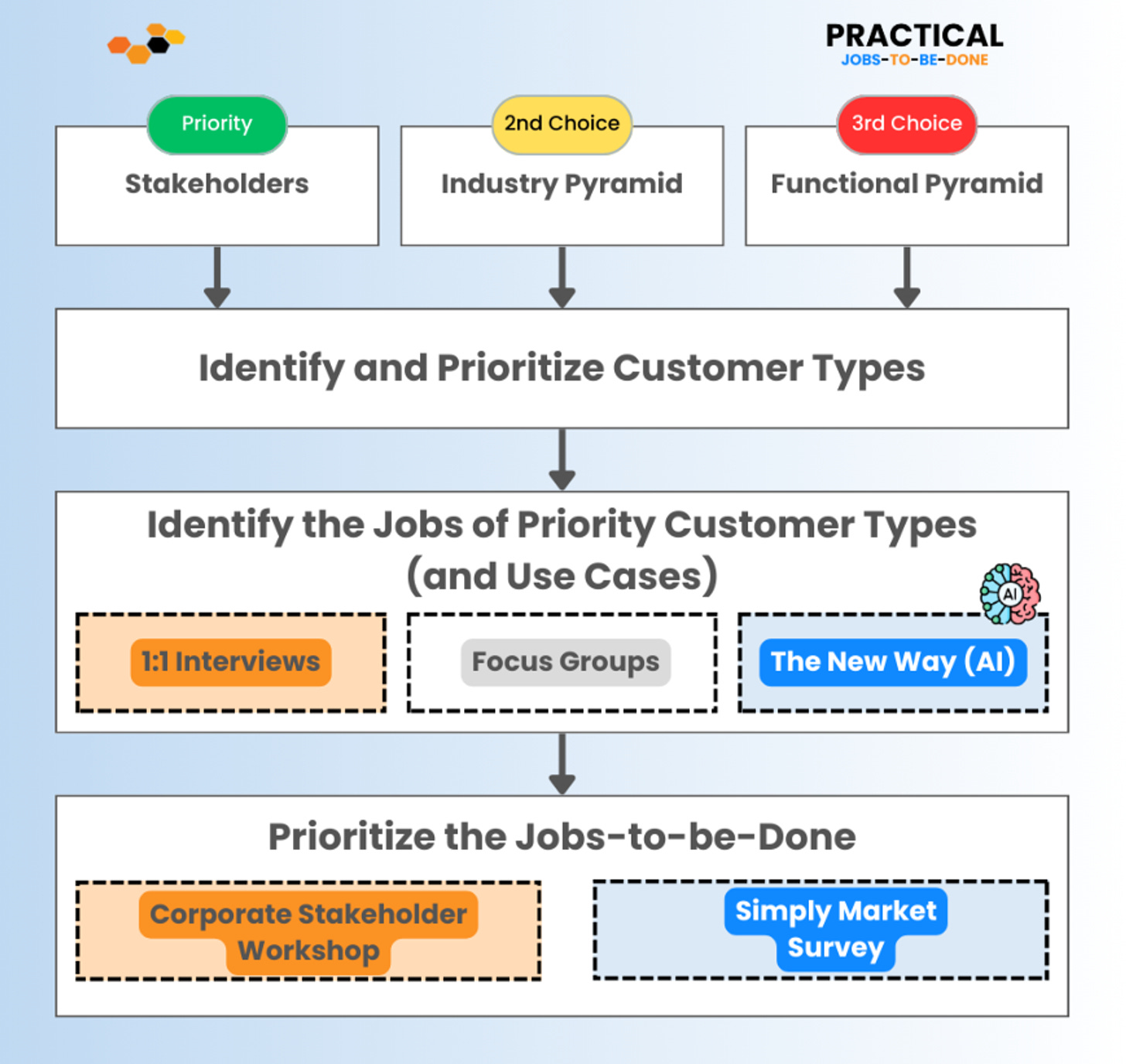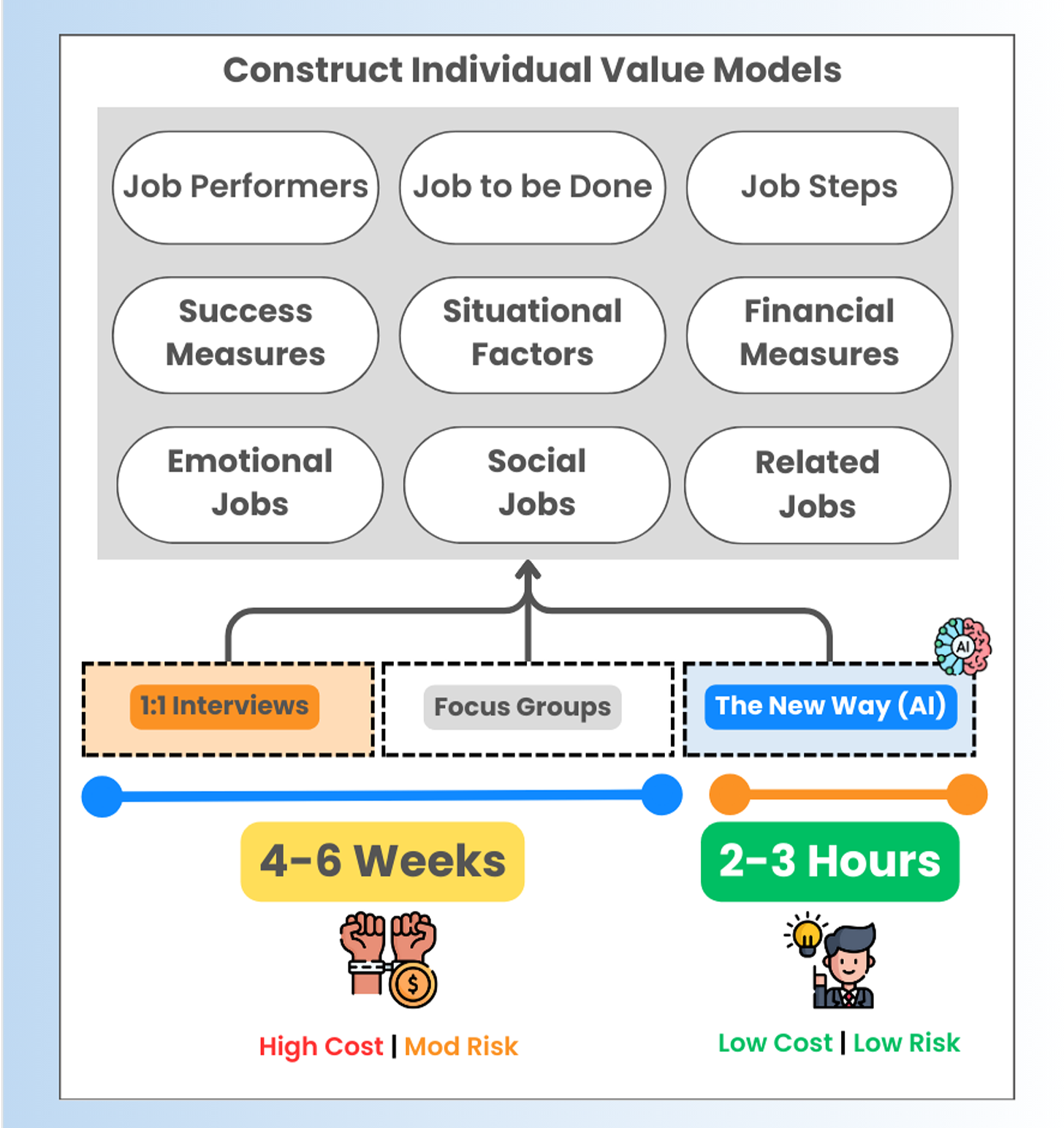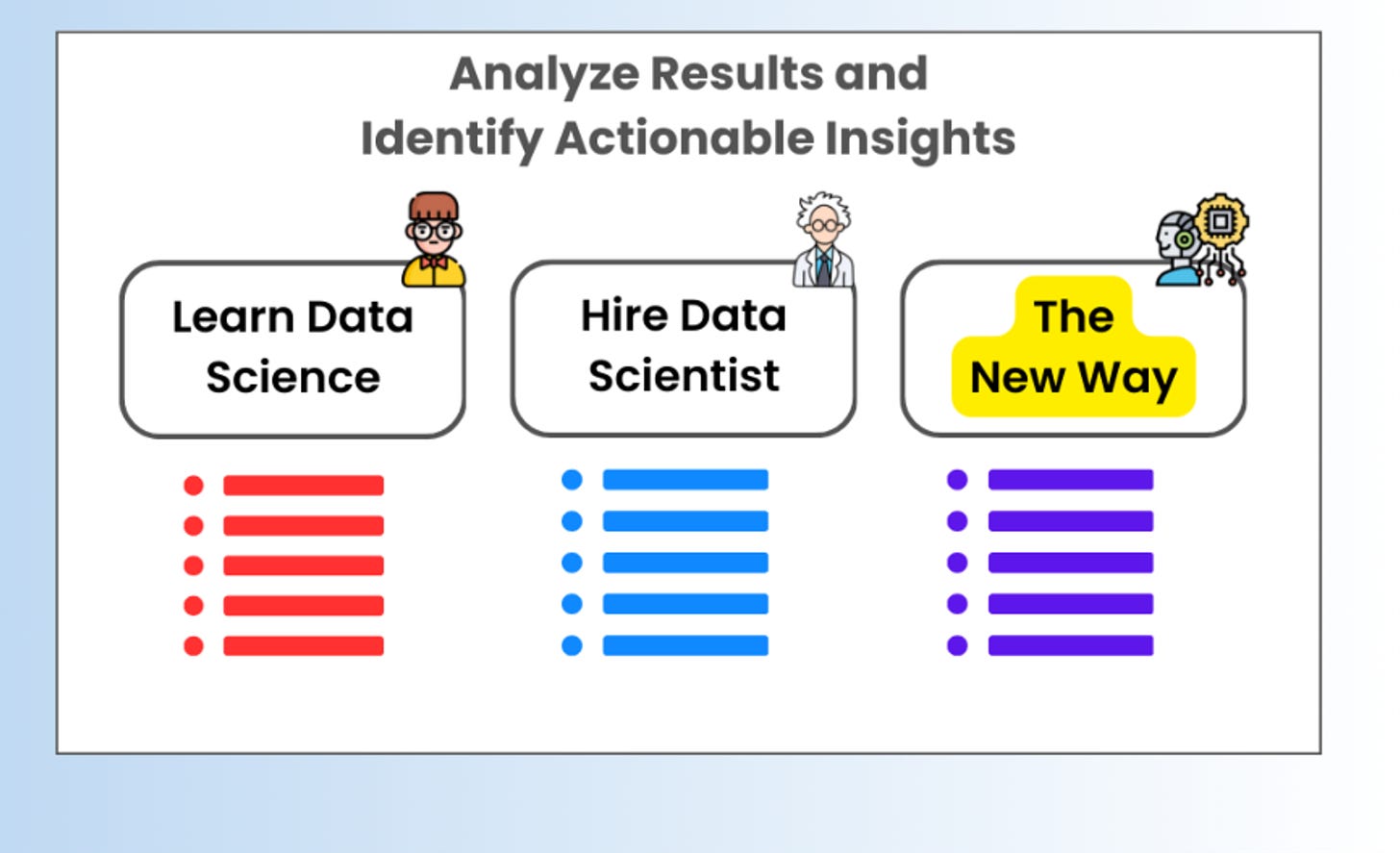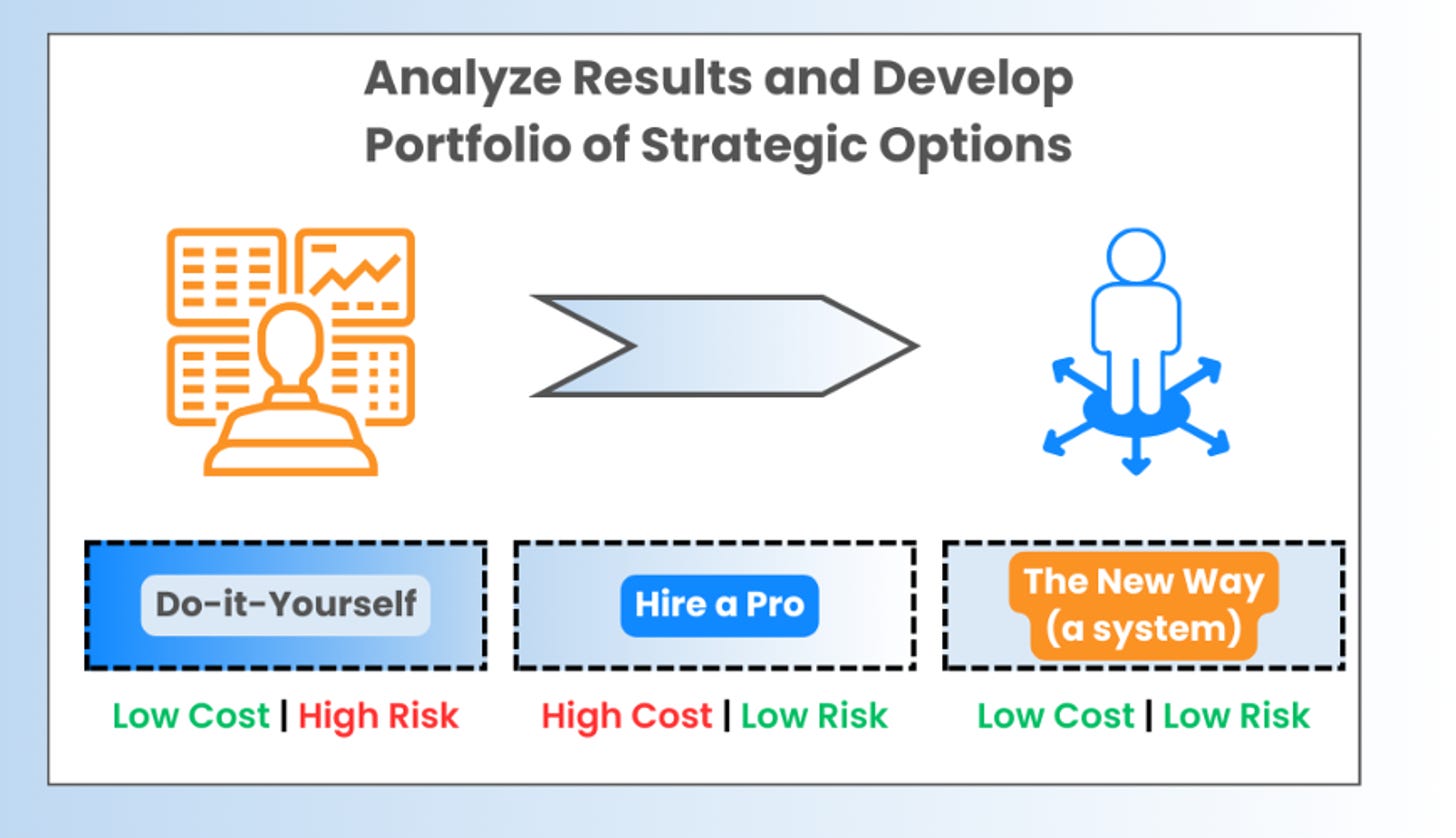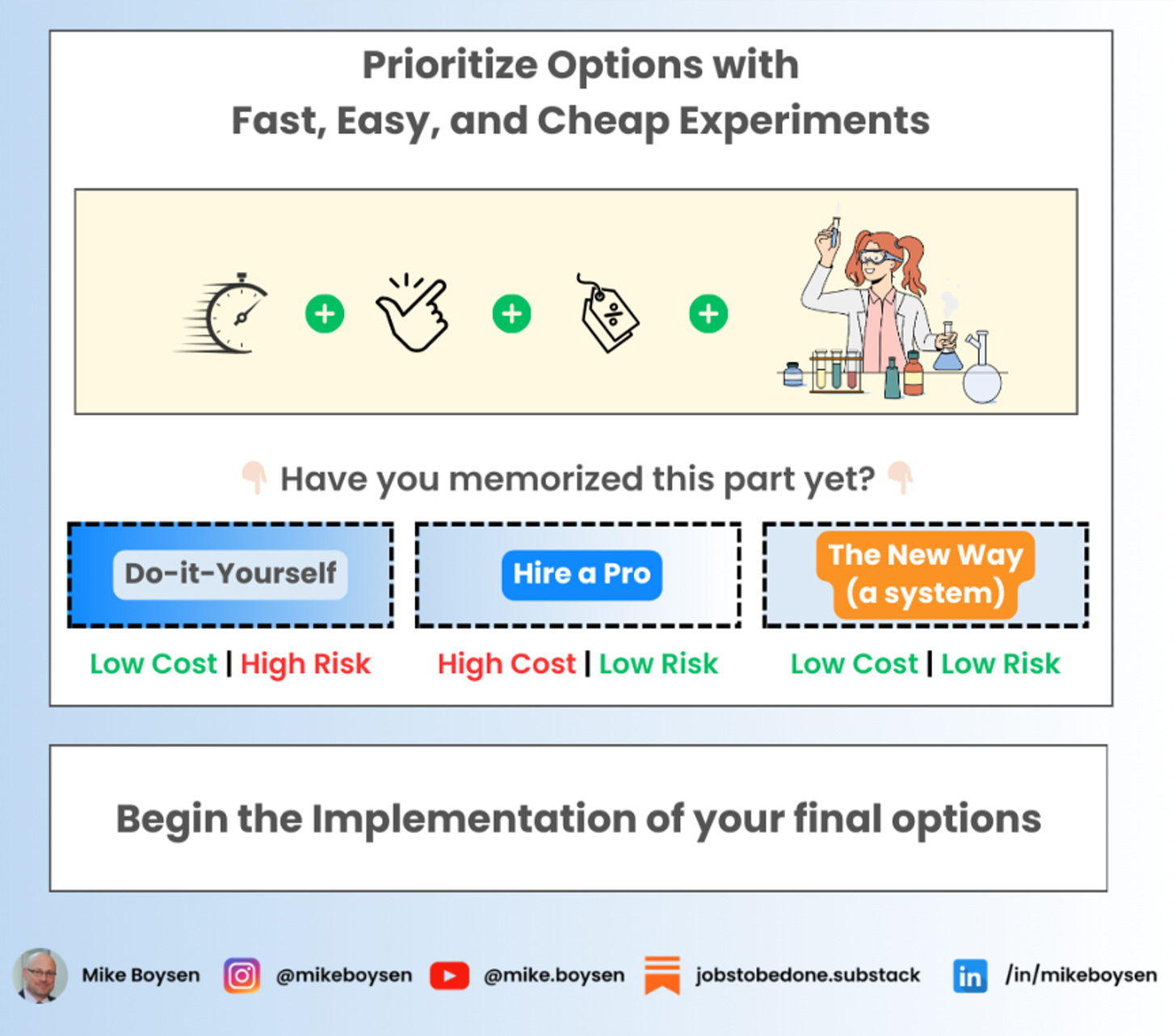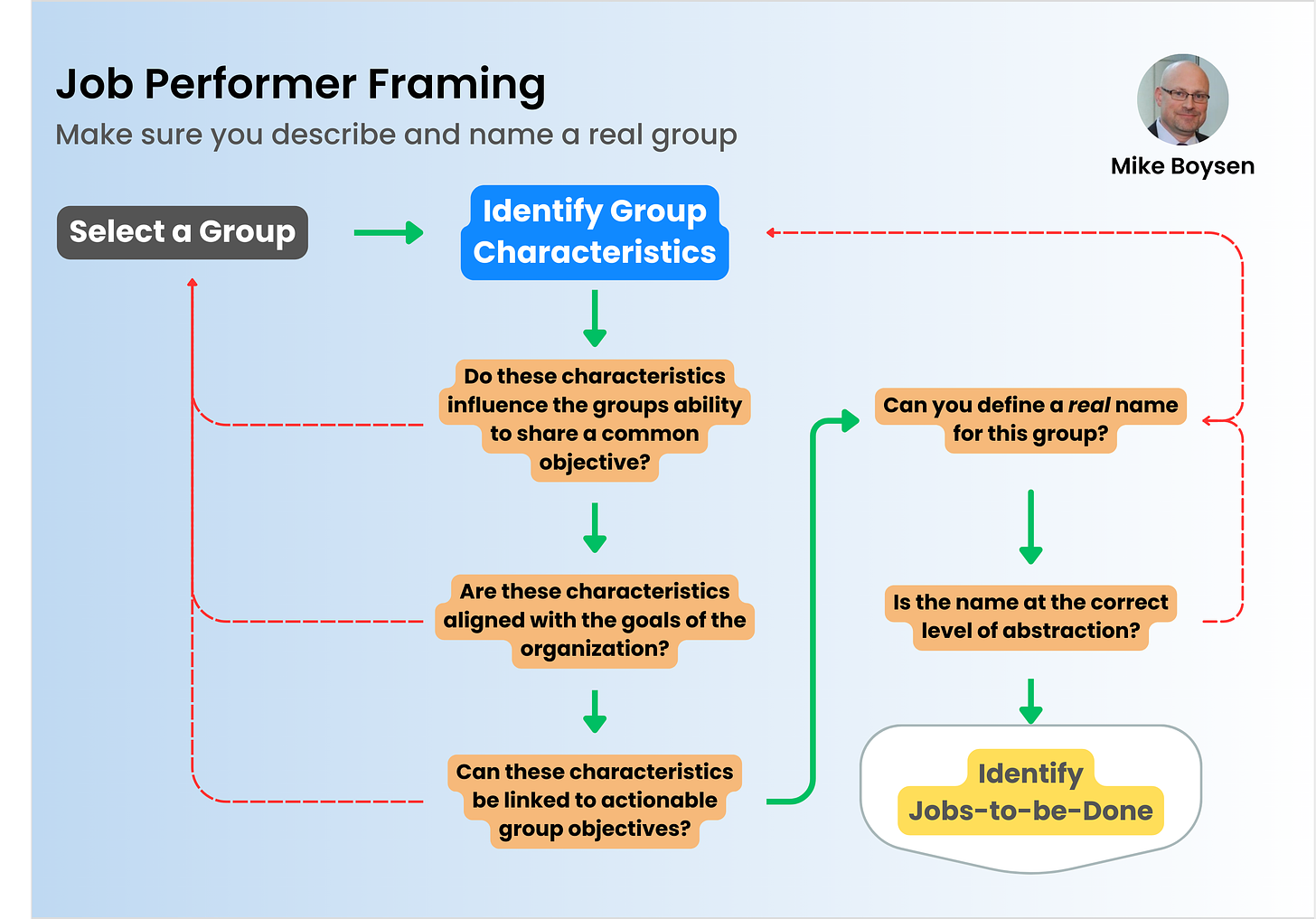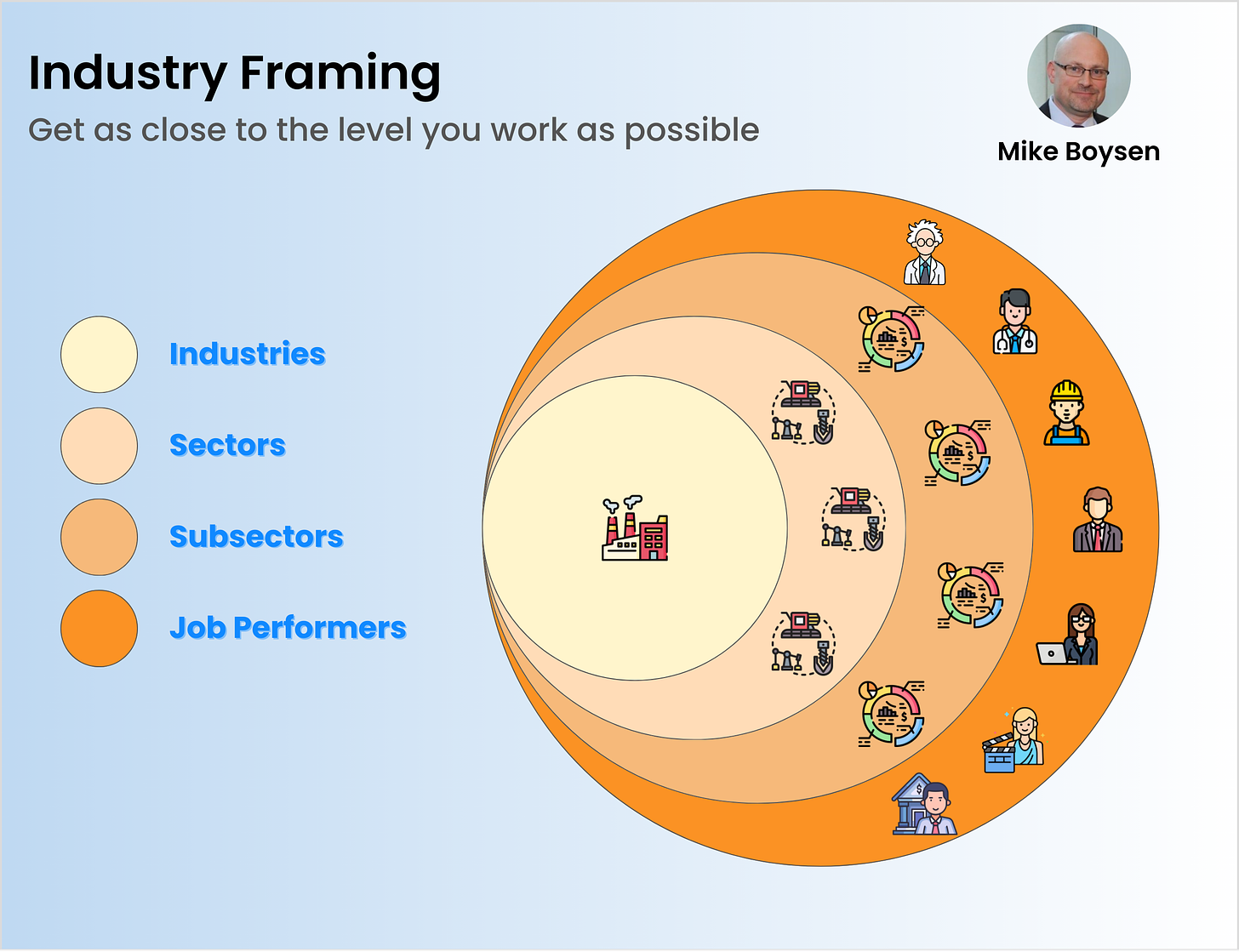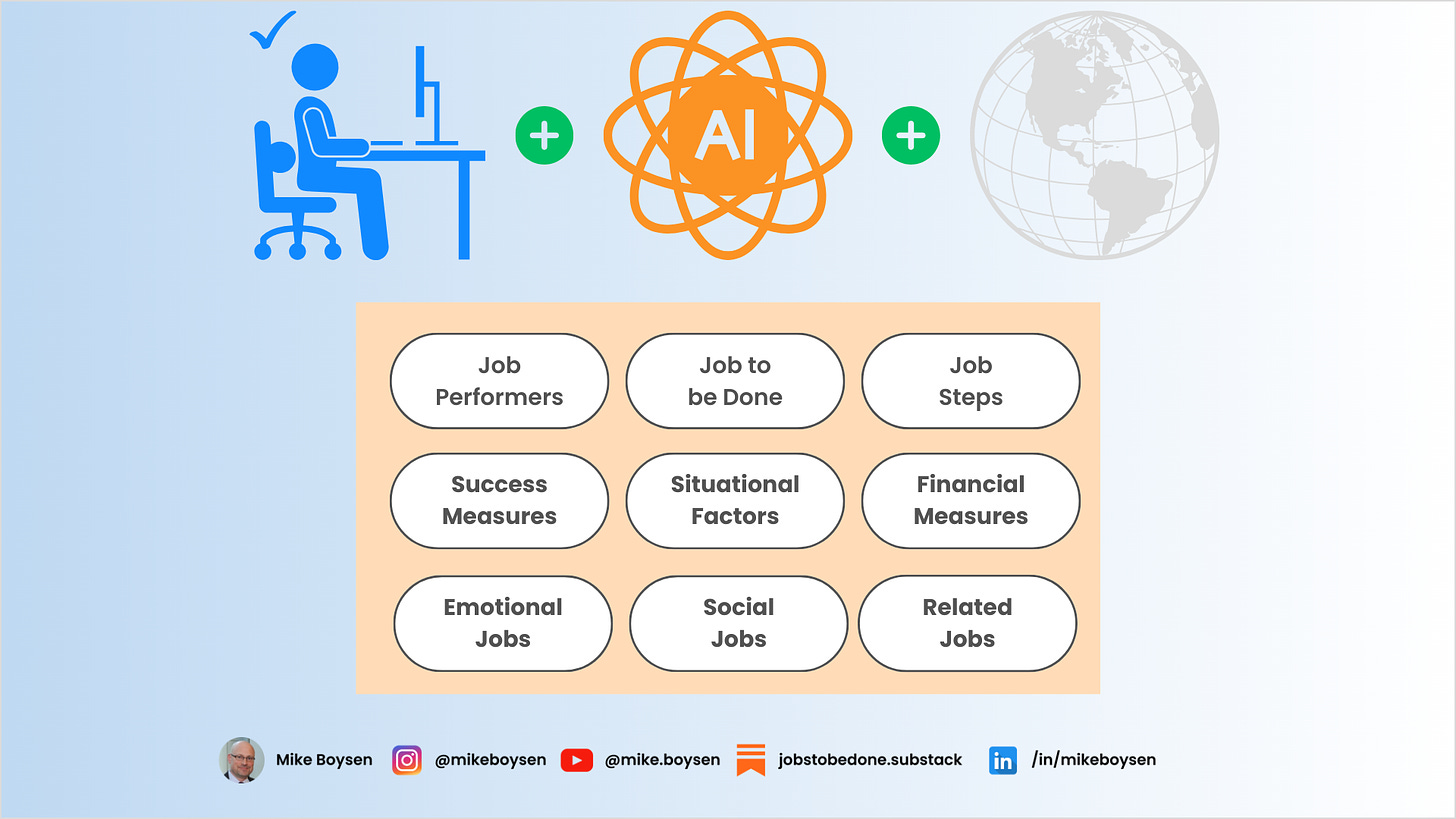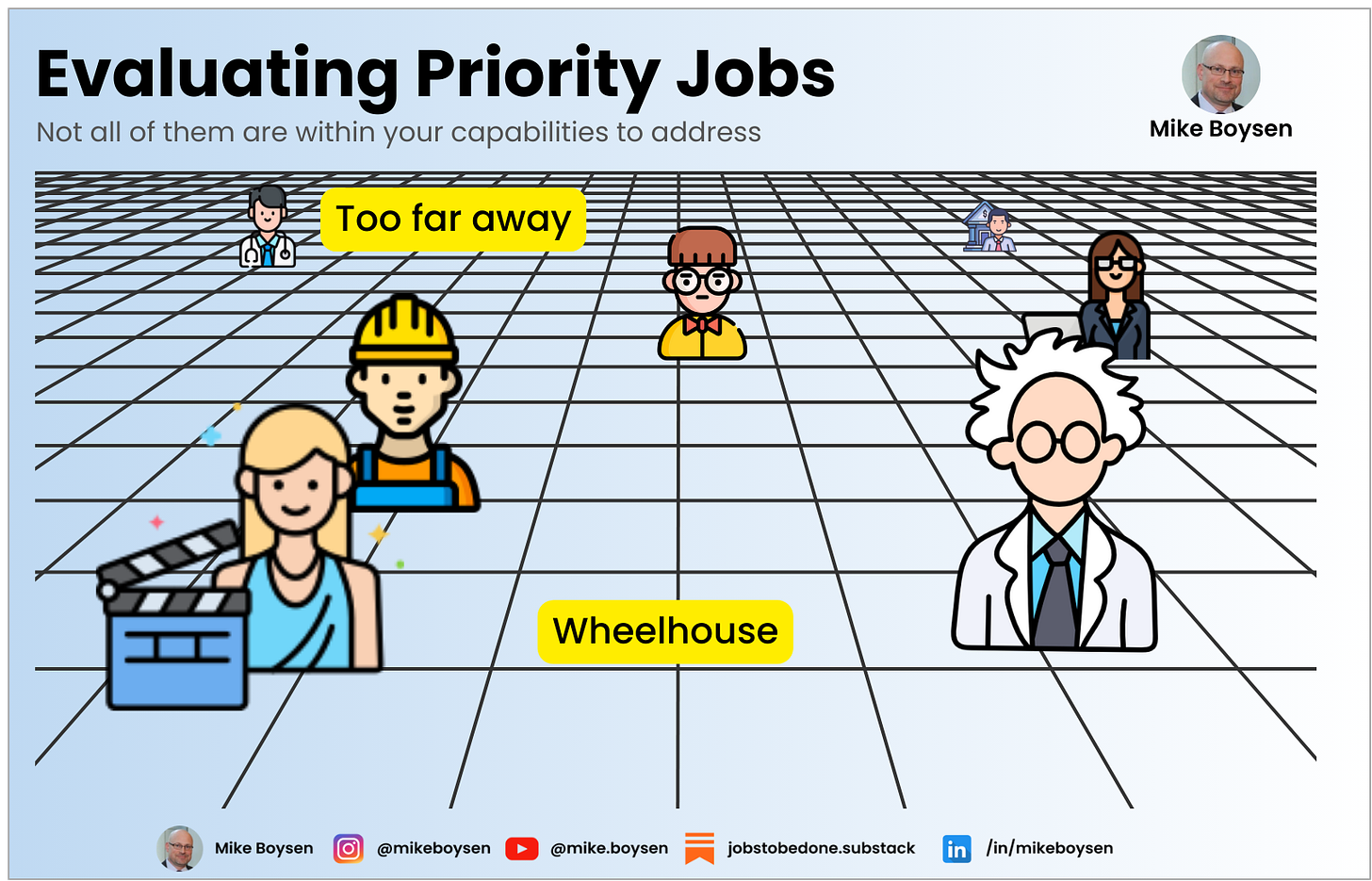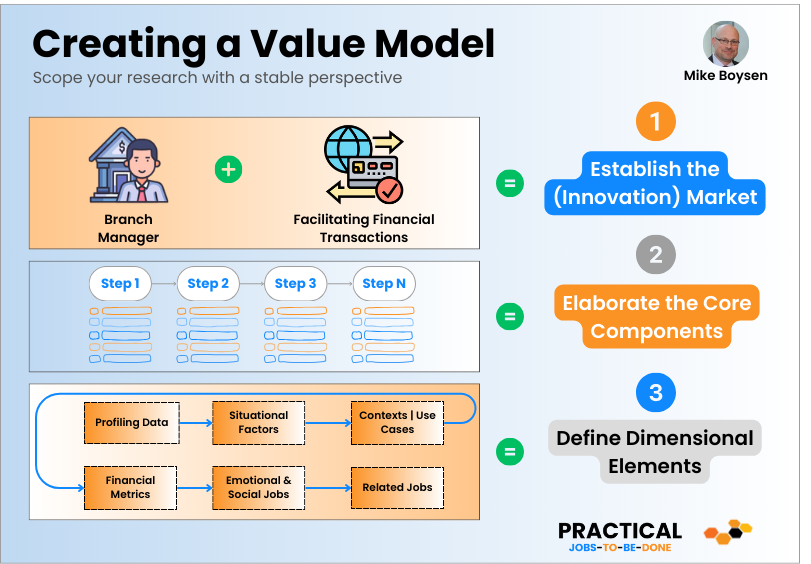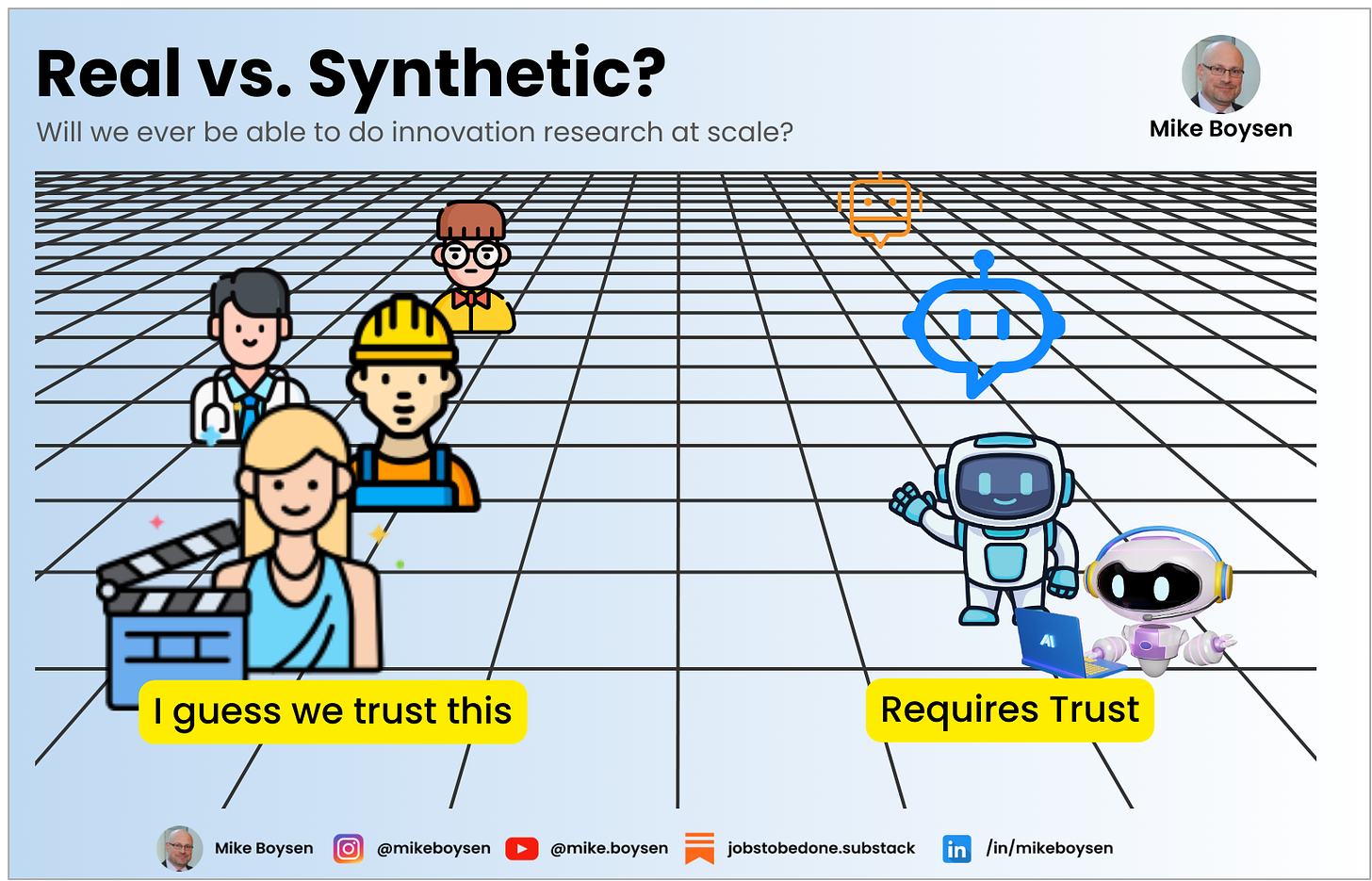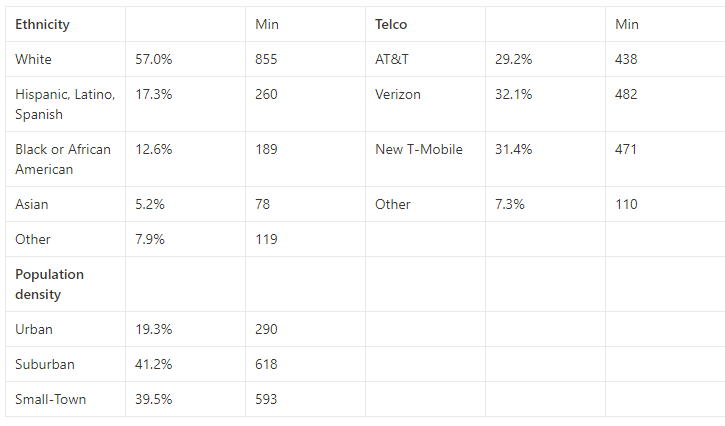Let’s begin by locating the position of this Job-to-be-Done in our standard industry classifications. Assuming that most of you are operating within the realm of what already exists, I think it’s helpful to align innovation markets to industry classifications. While Jobs are not industries, and industries are not markets, we need to start somewhere.
Agriculture, Forestry, Fishing, and Hunting
This industry involves the cultivation of plants and the rearing of animals for food, medicinal plants, and other products used to sustain and enhance human life. It also includes services in relation to farming, as well as activities related to fishing, hunting, and logging.
Animal Production and Aquaculture - Animal Production and Aquaculture is a significant subsector of the Agriculture, Forestry, Fishing, and Hunting industry. It covers a wide range of activities related to the raising and production of various animal species for diverse purposes.
Dairy Cattle and Milk Production - this involves raising cattle for milk and dairy products.
Example Jobs-to-be-Done from the provider perspective (these were generated).
Breeding and Raising Healthy Dairy Cattle - This process involves identifying and selecting high-quality breeds of dairy cattle, taking care of their dietary and health needs, managing their reproduction for a sustainable population, and ensuring their well-being to maximize milk production.
Ensuring Animal Health - This task requires regular check-ups, timely vaccination and deworming, prompt treatment of illnesses, and maintaining overall sanitary conditions to prevent disease outbreaks.
Optimizing Milk Production - Dairy farmers focus on achieving maximum milk yield by taking measures like proper feeding, regular milking, and maintaining a stress-free environment for the cows.
Producing Quality Milk - This job involves testing the milk regularly for quality, adhering to standards set by the dairy industry, and making necessary adjustments in cattle care to ensure the production of high-quality milk.
Managing Waste and Environmental Impact - Farmers work on methods to efficiently manage waste produced on the farm and implement practices to minimize their environmental impact.
6. Innovating Dairy Products - Developing and producing new types of dairy products that cater to evolving consumer preferences, like organic or lactose-free milk.
Arm & Hammer’s animal nutrition business (Church & Dwight) was looking for ways to stimulate significant growth and turned to Outcome-Driven Innovation to find it. After experiencing a failed product launch, they weren’t sure what went wrong. Unfortunately for us, there is no job map nor are their success metrics available for comparison. However, given that these are older studies, that used different rules, it almost doesn’t make sense to compare them anyway.
The entire point of this is to demonstrate that AI can replace humans during qualitative Jobs-to-be-Done research.
The case study did outline some of the major revelation categories:
It helped to clarify who their real customer was. They had always known it was the Dairy Producer, but focused most of their attention on nutritionists. Nutrition is only a part of herd productivity. They found many opportunities, but only a handful had anything to do with nutrition. Lesson: Make sure you target the right end user.
Traditional demographic segmentation is helpful for sales resource prioritization. However, it’s not useful for finding innovation opportunities. They found that mega dairies and small dairies shared many of the same unmet needs. Since mega dairies had the most impact to the bottom line, they focused their sales resources there. They assumed that small dairies had completely different needs.
They learned where to find the low hanging fruit. They analyzed their existing products to determine which ones addressed the most underserved needs. While they had a segmentation, they sought to find as many unmet needs that all segments shared and made them the highest priorities
They redesigned their messaging across literature and websites to make them outcome-focused. Changing the messaging actually had the biggest impact because all of the ads across competitors were virtually the same. They broke the mold so customers really understood how a product was going to help them.
They learned what becoming a total dairy solution provider would look like so it could be considered for their strategic roadmap. This included helping them making complementary acquisitions where they needed a capability quickly.
What’s really important is whether we’re able to pull everything we need to know about Dairy Producers who are Optimizing Dairy Herd Productivity for milk production using Generative AI. Perhaps some of my readers are dairy farmers and would like to comment 🤣. Let’s dig in.
Sidebar: According to AI, the Job-to-be-Done could have been Optimizing Milk Production, which is more concise. I’m not sure if there’s a way to do it without a dairy herd (yet) so including that seems unnecessary.
What I did, Why I did it
Now that some of the caps are coming off ChatGPT 4 I don’t have to stop and start as much, so I’m adding some more into the mix. Whether my maps and desired outcomes are perfect or not is irrelevant. I’m trying to prove that I can get more information from every nook and cranny than you will ever get in a small set of Jobs-to-be-Done interviews…or even a large (and cost prohibitive) set. Handcrafted qualitative research is also not perfect.
I’m generating multiples maps and success statement sets
I’m using multiple platforms
I’m using multiple techniques (step-by-step vs. single prompt)
I’m generating Strategyn formatted desired outcomes and I’m generating my "Know” version. The latter is like asking the 5th Why. This version also doesn’t impose undue hardship on people who are used to more matter-of-fact vernacular.
I’m manually comparing and evaluating the maps and creating a better version based on commonalities as well as the gaps between them.
I’m generating hundreds of additional success metrics to consider for the Job and also for the Related Jobs (which we typical just rate directly).
I’m always fine-tuning my prompts.
You might say this is too voluminous, but that’s where AI can come in again and help to synthesize it into something more concise. It depends on what you’re trying to do.
I generated a lot of maps, so I’m only going to present the step-by-step version here. The rest are in the catalog which you can find here. Paid Subscribers: You’ll find a direct link at the end of the post.
I Generated Multiple Maps
Each of the maps are different. ChatGPT will phrase the same concept in multiple ways. Sometimes it will have steps at the beginning, in the middle, or at the end that are not in the other maps. For these reasons, I believe it’s still important for some human intervention.
Having said that, this intervention is minimal. The goal should be to ensure…
that the Job-to-be-Done begins and ends where you, your client, or a group of stakeholders intend to learn something new.
that the steps are phrased in a way that provides an understandable anchor for a survey respondent.
that the success statements are at a level of fidelity that can find value gaps in the market
I like to start by generating jobs in an industry sector (as seen above) and then to understand use cases, and also related jobs as both may stimulate you to rescope your effort prior to generating the core content. I find this information to be so much more powerful than any desk research I’ve seen (feel free to disagree). It ensures that everything is considered, and that concepts are not constrained by any personal or professional bias.
I Synthesized the Maps
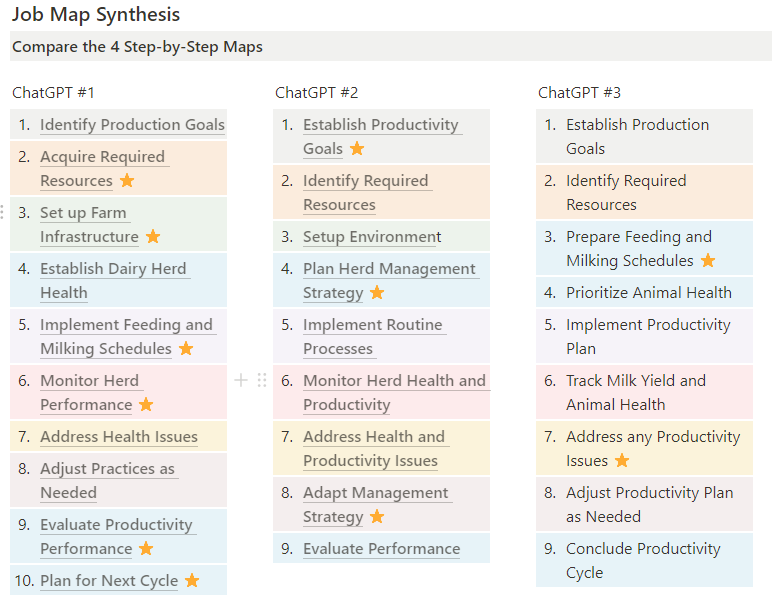
As you can see the maps are different, yet not so different. I sometimes color code similar steps the same, other times I just color code the ones I’m keeping. In this case I put a star next to the keeper ⭐. Once I ensure that I’m considering all of the steps that need to be studied, I can then create my own synthesized map, sometimes with slightly reworded step names.
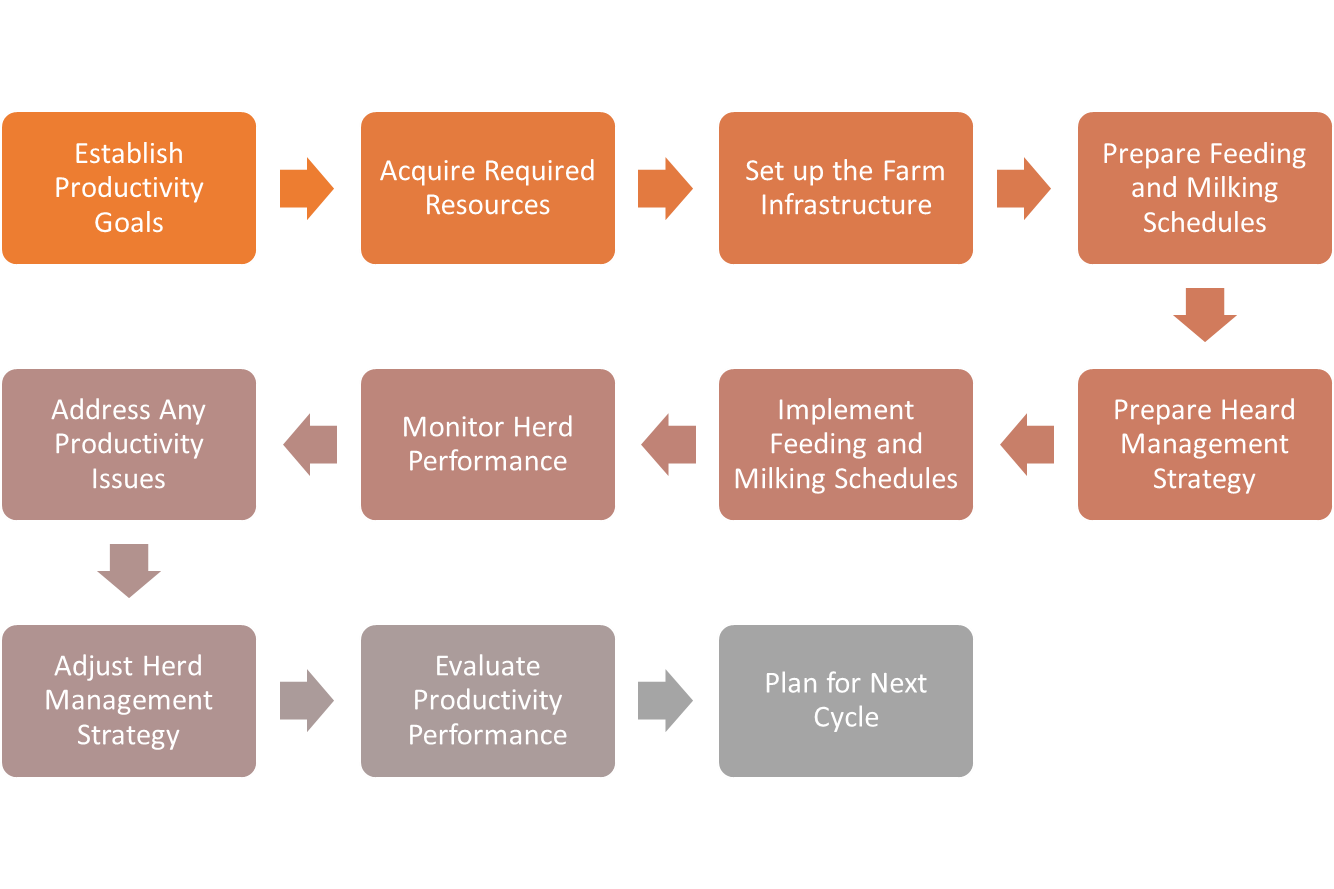
I Generated and Synthesized Success Statements
Now that I had a map, I could go back to ChatGPT and run my success statement prompts. This is where I only take a single pass. I recommend possibly adding an extra step and running multiple passes. I’ve found that 7-12 success statements may not focus on needs that are relevant to your scope. Taking multiple passes offers more to consider. The alternative to this is to generate a list of ~25-50 and then cherry pick the ones you want to include in your study. I’m leaning toward the latter approach going forward.
The second approach is to take the success statements generated from the original passes and combine them by common steps (see color coding above). I have a prompt I use to have ChatGPT consider all of the statements, and then synthesize the back into a concise set of MECE statements. The goal is to ensure that there are no gaps, or duplicates. The jury is still out on this, but ChatGPT is very good and doing this sort of task.
To get access to the research content (which goes into far more depth) you can find that here. Paid Subscribers: You’ll find a direct link at the end of the post.
Again, the point of these posts isn’t to train you. It’s to demonstrate what is possible so you can begin the journey toward a new mindset in your innovation research. The days of expensive consulting, or having to guess at how to execute this secret process on your own are quickly coming to an end.
There is still much more that needs to be automated and most of that moves into the data science spectrum that I imagine most product peeps aren’t super-experienced in. Right now I’m imagining how amazing a trained machine-learning model would be at not only running an impossible number of segmentation and prioritization scenarios, but also analyzing and correlating various components of your data model and recommending your next steps.
Yes, that was a run-on sentence. I do that when I get excited!
End the Analysis Paralysis
If you or your team is struggling with Jobs-to-be-Done, I’d like to help. I’m leading the way to a better innovation and product development process.
I’m here for companies who don’t want to, or can’t invest in Big N, or specialty consulting firms and their leveraged resource models.
I’m 20x faster and 10x less expensive than your traditional options because I’ve embraced modern tools and methods.
I’m not here to engage you with theatrics, I’m here to collaborate and systemize. It’s not about me, it’s about you.
Using my adapted approach to Jobs-to-Done - with a little bit of human experience on top - I can help you to get the insights you need in days and weeks without the need for an army of inexperienced consultants and analysts that add unnecessary cost and deliver static PowerPoint decks.
Qualitative Research - at the speed of light ✅
Quantitative Research - with dynamic leave-behinds ✅
Strategy Formulation - focusing on the top things you should do today ✅
You can reach me at [email protected]

